Last-Minute NYC Holiday Gift Guide 🎁
We’ve created a holiday gift guide with presents for the intrepid New Yorker that should arrive just in time—


Quite forgotten in the shadow of the UFO-like Queens Place, amidst the bustle of Queens Boulevard is a Modernist gem of a building. Once you notice it, it’s impossible to not see it as a relic of jet-age design, with its parabolic, wing-like copper roof that evokes something of the TWA Flight Center or the lost terminals at JFK Airport. In the mid-century, Modernism was certainly in the air in Queens, not only at the airport but also with the arrival of the World’s Fair at Flushing Meadows-Corona Park in 1964-65.
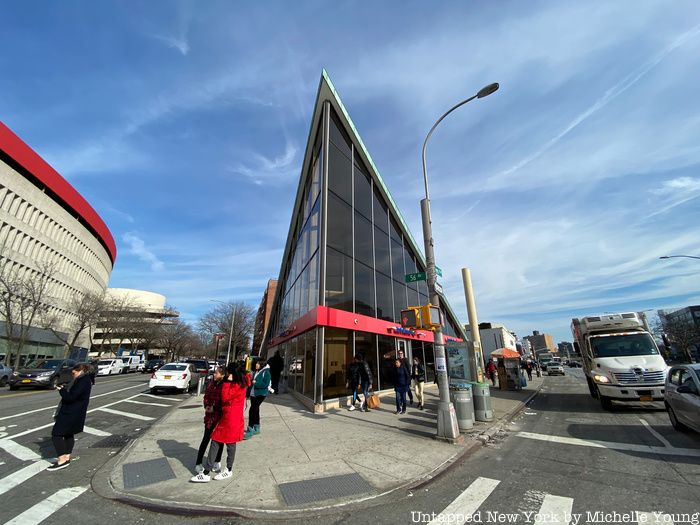
The building at 89-01 Queens Boulevard in Elmhurst was built from 1964 to 1966 as the Jamaica Savings Bank. In a strange and unusual twist of events, the bank is one of five buildings in the history of New York City to have its landmark status revoked. It was approved for landmarking by the Landmarks Preservation Commission on June 28, 2005 but by late October that year, the New York City Council voted to have the designation overturned.
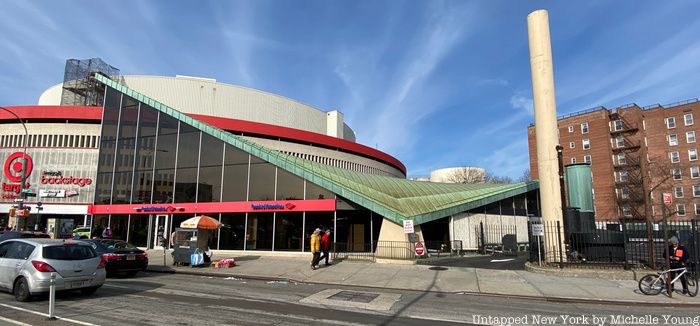
It was no secret that the move to revoke landmark status was political. Former Queens City Council member Helen Sears told the New York Times that the local officials had been convinced by the building’s owner, New Ba Property LLC, which still owns the property today, that it would face significant hardship by landmarking. The owners, who had hired legal counsel on the issue and formally testified against landmarking, cited the building’s supposed tendency to flood, danger to pedestrians during rain, and the general difficulty of maintenance.
Sears, who represented the area of Queens, voted against the landmarking in City Council (although she maintains that she thought was voting for the landmarking but Simcha Felder, who ran the Landmarks Subcommittee at the time, forced a negative vote and it was not widely reported that the Subcommittee was recommending rejection of the designation). Only one member of the City Council, Bill Perkins, voted to uphold the designation, while former Councilman Oliver Koppell abstained from the vote.
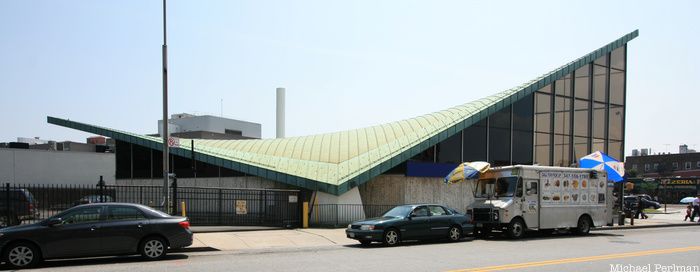
The Landmarks Preservation Commission issued a statement in response: “We are extremely disappointed by the City Council’s action to overturn this important Queens landmark.” In its designation report, which can still be viewed online, the Commission proclaimed the bank as “one of the most unique and memorable” structures along Queens Boulevard and a “bold expression of mid-20th century engineering.” The report noted that the building was deliberately designed to stand out from the commercial development around it and that in 2005, it remained “well-preserved” and still serving its original function, though the bank itself had changed to a North Fork Bank. It later became a Capital One and today, is a Bank of America.
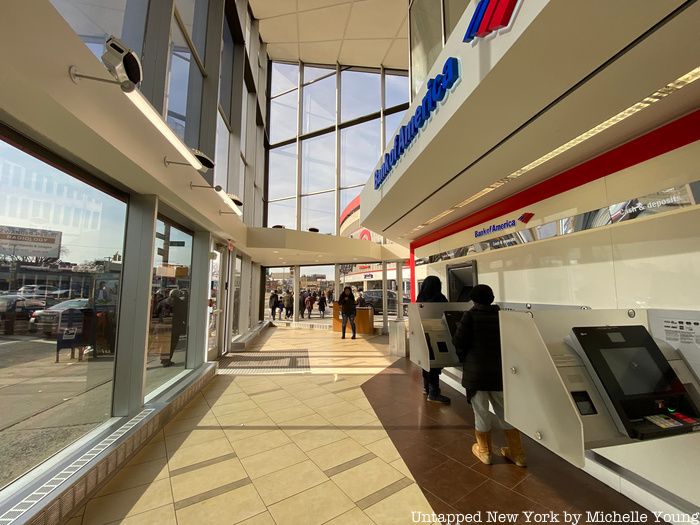
The unique shape of the building is possible due to the presence of a shell of reinforced concrete and two concrete piers that allow for the roof to span 116 feet wide and to rise to 43 feet tall at the entrance. “This solution,” writes the Landmarks Preservation Commission, “had both practical and symbolic advantages; enhancing the structure’s visibility and creating a column-free interior.” It also satisfied the requirements of building on an unusually-shaped lot. The building comes to a triangle at the corner entrance, with two large glass facades meeting.
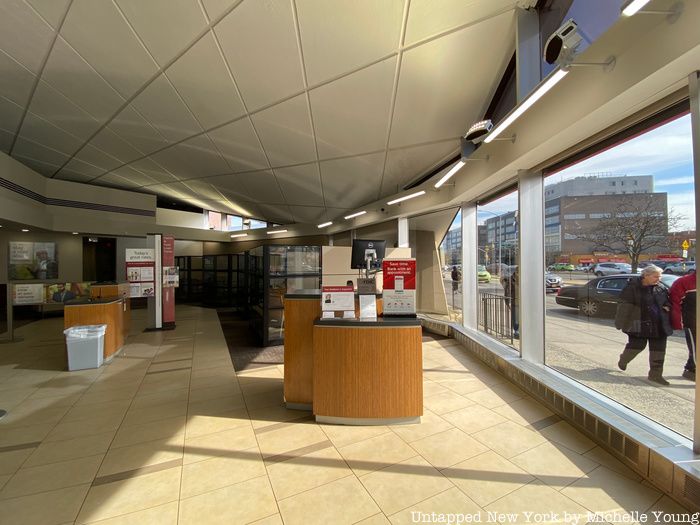
Simeon Bankoff, executive director of the Historic Districts Council, told the New York Times that one major factor behind the decision was the public’s lack of appreciation for Modernism, stating “People have a real hard time warming up to modern architecture.” You can see clear evidence in the comments in the message boards of Wired New York, an online forum for real estate and architecture. Commenters expressed their displeasure, noting that in their opinion, the building was “ugly” and that the Landmarks Preservation Commission was “incompetent at best.”
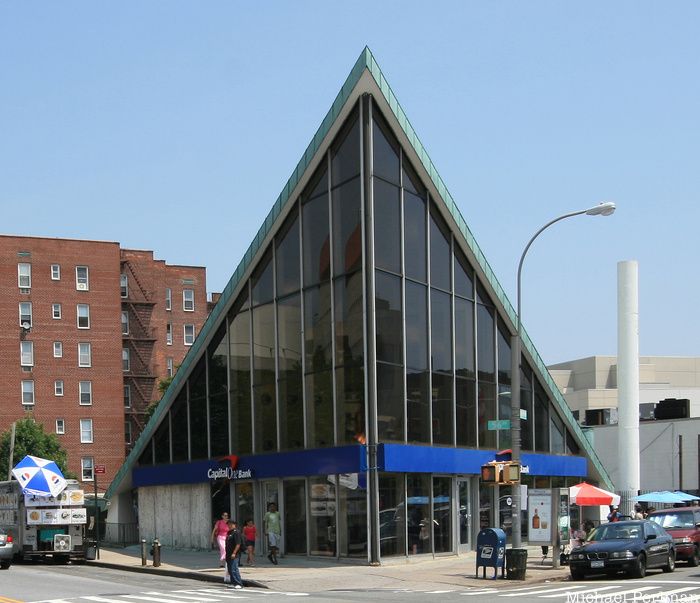
The Landmarks Preservation Commission designation report however, makes a clear case for why this bank was particularly unique. The Jamaica Savings Bank was in the midst of celebrating its centennial anniversary when the project to build the Elmhurst branch began. The company hired for the building, William F. Cann Company was part of the Bank Building & Equipment Corporation of America, which the Commission states “helped introduce modern aesthetics into the banking mainstream.” This was the very moment that banking architecture made a very distinctive shift away from the traditional classical Beaux-Arts style in favor of an aesthetic that would make a statement about transparency and openness. All this was part of a larger optimism about the future and the promise of scientific advancement, manifesting itself to the public in the 1964-65 World’s Fair.
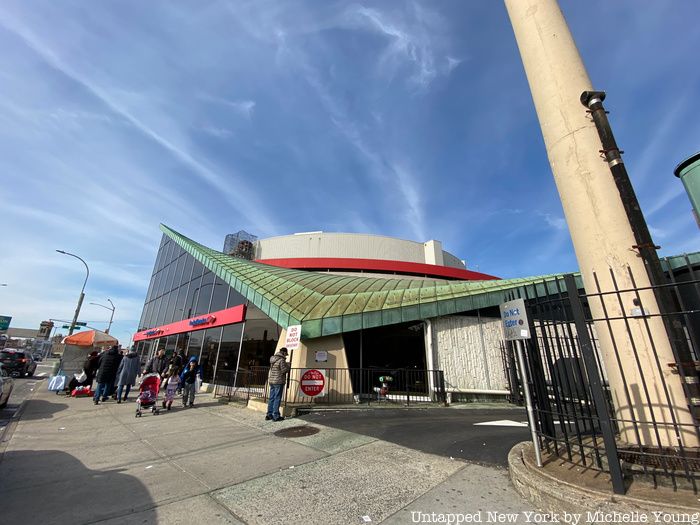
In addition, banking architecture was normally done by local architects, but as architectural historian Frampton Tolbert tells Michael Perlman in the Forest Hills Times, “this bank is unique as it was designed by an architect known nationally for cutting-edge bank design. Other Modern buildings in Queens designed by architects of this caliber were typically major projects for airports, and many have been demolished or badly altered.”
[post_featured_tour]
In the last fifteen years, public opinion about Modernism has taken a pendulum swing, as demonstrated with the craze over the reopening of the TWA Flight Center as the TWA Hotel and the chagrin of losing Worldport Terminal and other Modernist gems in New York City. Calls to reactivate the New York State Pavilion from the World’s Fair reached such a fever pitch that groundbreaking on its restoration took place last November. As such, a new push to re-landmark the former Jamaica Savings Bank has begun.
The Elmhurst History and Cemeteries Preservation Society, a 501c3 not for profit group of dedicated preservationists and civic members, is currently readying for another application for landmark status. The group has stated, in a December article for Juniper Park Civic Association, that the new local councilman, Daniel Dromm, is in support of the effort. James McMenamin, Vice President of the Elmurst History and Cemeteries Preservation Society and Vice President of the Newtown Civic Association tells Untapped New York that the application should be submitted, “very very soon.” Bankoff of the Historic Districts Council tells us, “this is an opportunity to correct a poor decision by a previous administration, and a chance to add a prominent and worthy building to the shamefully-small list of protected buildings of our recent past.”
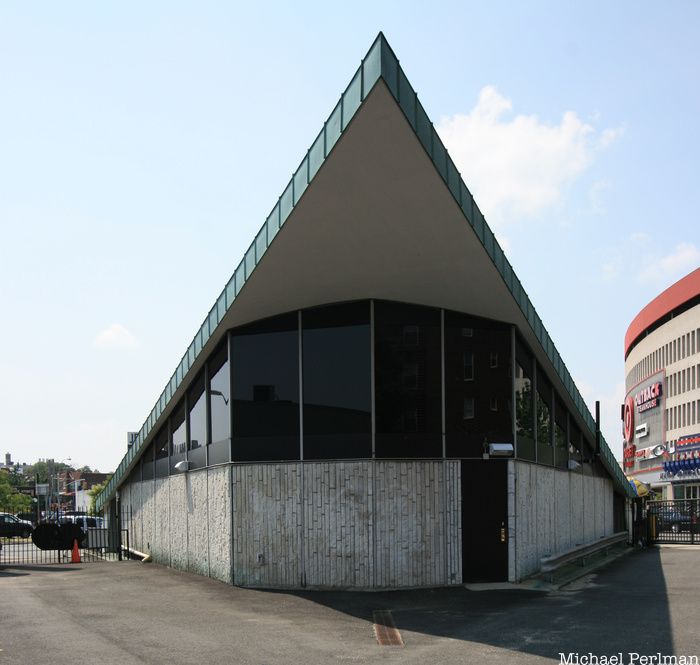
McMenamin also tells us, “Queens has been largely shun or cast aside in regards to landmarking. In our lifetimes, we have seen many structures, some beloved or sentimental to us, face the wrecking ball, without much of a shout out in opposition. In this case, a modern building, whose initial impact upon the landscape was seen as bold and visionary, must be saved, as development encroaches all around its shoulders. I’ve seen countless people walking down the boulevard continue to stop in their tracks to gaze and admire its unusual aesthetic physique. Once briefly landmarked, then rescinded, we dearly hope to right this wrong, and see that this stylish space age example be preserved, as there are so few remaining.”
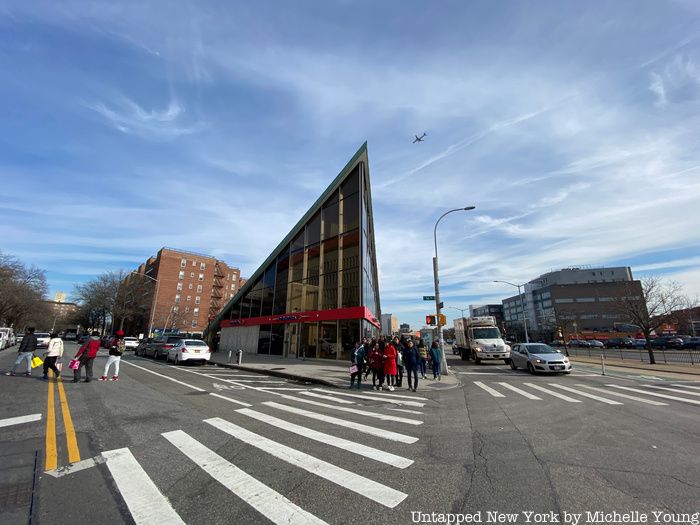
Michael Perlman of the Rego-Forest Preservation Council tells Untapped New York, “There are few Modernist landmarks in Queens, as well as landmarks throughout our borough, which should make the case of securing Individual Landmark status for the former Jamaica Savings Bank stronger. As a historic preservationist & Chair of Rego-Forest Preservation Council and a five-generation local resident, I deem this important building a landmarking priority. Its experimental and abstract style was revolutionary for a bank and in relation to Queens architecture. Many existing banks at the time were Colonial or Art Moderne. It was futuristic, and I feel that it offers a solid expression of the style which was ushered in by the nearby 1964 World’s Fair. It is unique in every sense.”
Stay tuned on the landmarking effort for the former Jamaica Savings Bank. You can visit this location easily and enter into the branch to experience the space for yourself.
Next, join us on our upcoming tour of the Remnants of the World’s Fair!
Header photo by Michael Perlman
Subscribe to our newsletter